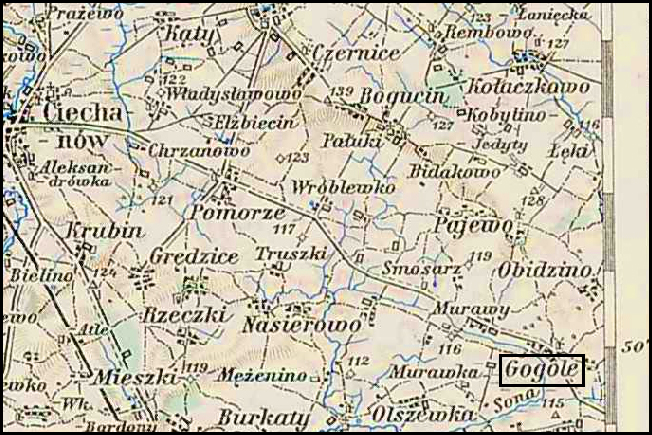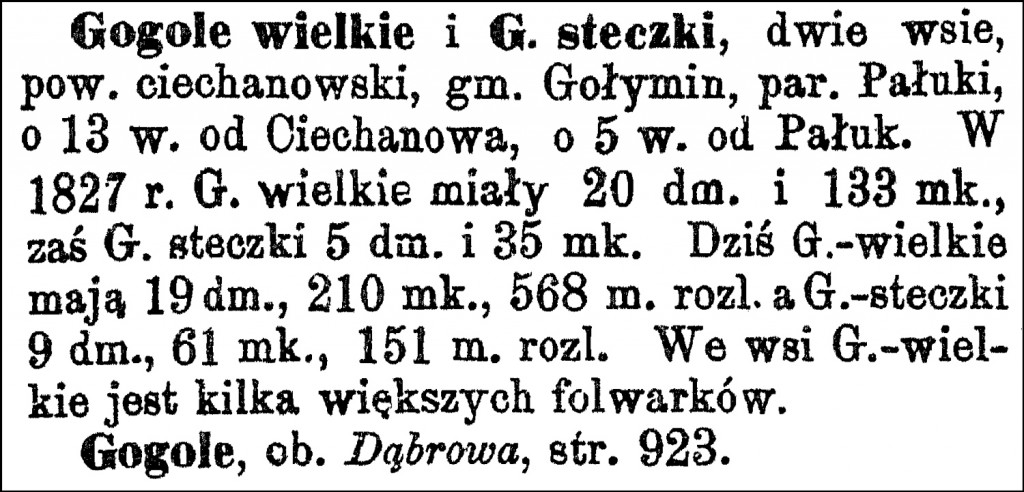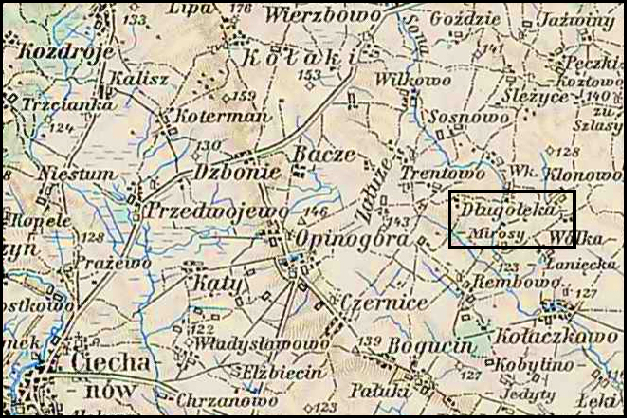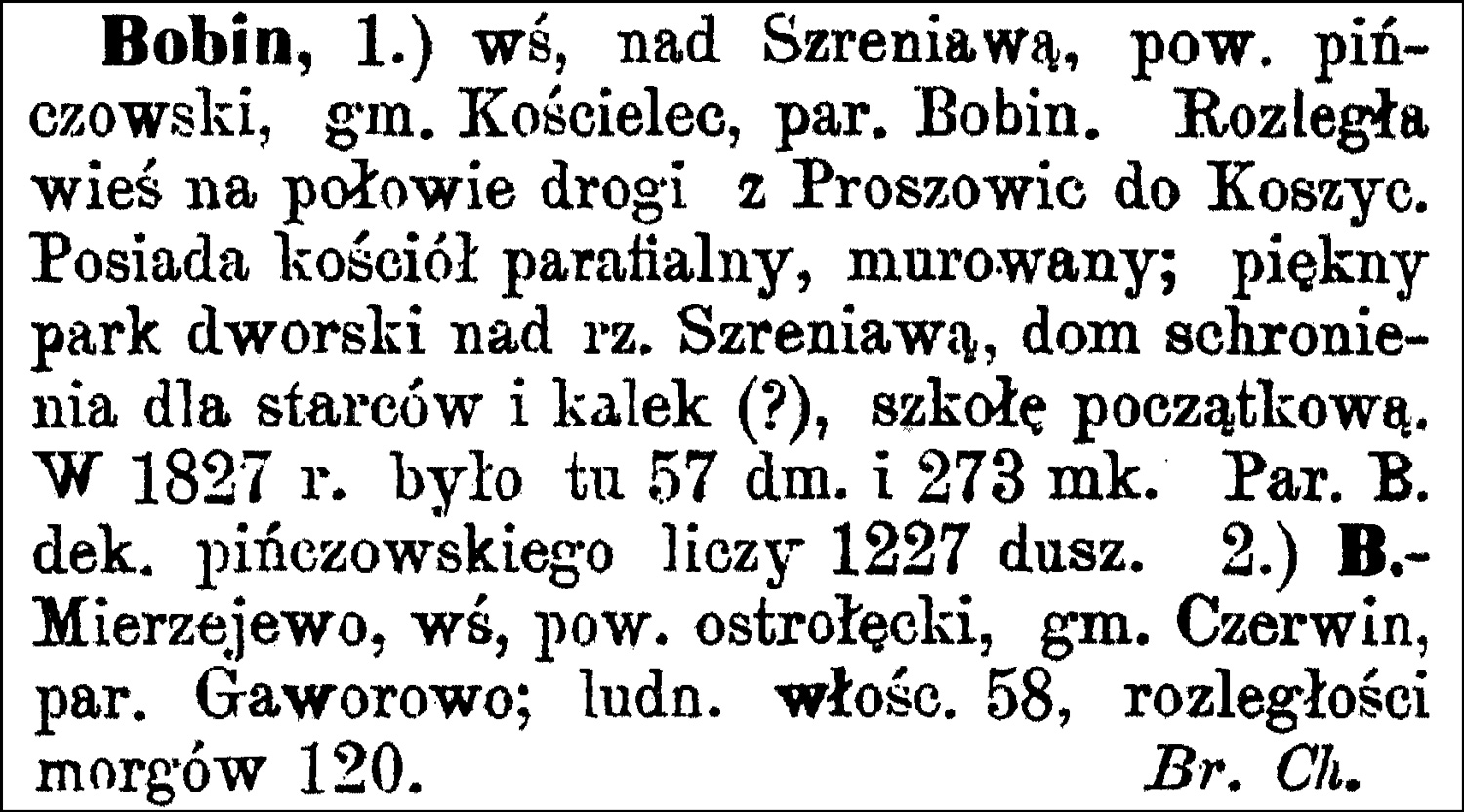One of the places that appears in the records of verious relatives was Długołęka. There are three major entries with a total of six records of places by this name in the Słownik Geograficzny Królestwa Polskiego i Innych Krajów Słowiańskich (Geographical Dictionary of the Kingdom of Poland and other Slavonic Countries). In addition, this record specifically mentions a Józef Niedziałkowski who owned one of this villages (I am conducting a one-name study on the Niedziałkowski surname).
Słownik Geograficzny Entry for Długołęka
Source: Sulimierski, Filip, Bronisław Chlebowski, and Władysław Walewski, eds., Słownik Geograficzny Królestwa Polskiego i Innych Krajów Słowiańskich (Geographical Dictionary of the Kingdom of Poland and other Slavonic Countries) – Warsaw 1881, Volume II, page 039.
Click on the link for a PDF copy of the Słownik Geograficzny entry for Długołęka. Translated from the Polish, the entry reads:
Długołęka 1.) a village in the Kutnow Powiat, Sójki Gmina, and Trąbki Parish. 37 włókas [a historical area measurement unit equal to 16.8 hectares] of arable land, a young forest of 10 włókas, and 359 residents. A beaten track leads 16 versts [0.66 miles per verst] to Kutny. Buildings with stonework and roofs of tile and asphalt. The base of the earth is clay and marl, and farming is prosperous and rational. There is a distillery. In the year 1827, there were 22 homes and 162 residents here, presently the count is 22 homes and 369 residents, there are 1440 morgs [in the Russian partition 1 morg = 1.388 acres] of general space, of which 1134 morgs are arable land, 120 morgs are forests, 60 morgs are meadows, and 126 morgs are the manor. The [unfenced?] Długołęka Starosty [district] came into existence at the beginning of the 17th century with the Gostyń Starosty. This village of Długołęka was assembled with a wójt and folwarks [large manorial farms]. In the year 1771, it was owned by Józef Niedziałkowski and he paid 282 Polish złoty for the quarter and 149 Polish złoty for hiberna [winter quarters for the military]. 2.) Długołęka, a village on the Vistula River in Sandomierz Powiat, Osiek Gmina and Parish. In the year 1827, there totaled 58 homes and 230 residents, currently there total 44 homes, 348 residents, and 503 morgs of land in the manor. It lies 29 versts from Sandomierz. 3.) Długołęka, a neighborhood of nobles in the Ciechanów Powiat, Bartołd Gmina, and Pałuki Parish. Within its limits lie the villages: Długołęka-Gębale, Długołęka-Mirosy (in the year 1827 there were 3 homes and 26 residents), Długołęka-Ossyski or -Osepki (in the year 1827 there were 5 homes and 221 residents), and Długołęka-Wielka (in the year 1827 there were 12 homes and 69 residents). This last one lies in the Sońsk Parish on the Sona Creek and it totals 100 residents, 9 residential buildings, and an area of 250 morgs of which 228 is arable land. The Długołęka-Mirosy folwark has an area of 122 morgs, namely: 101 morgs of arable land and gardens, 10 morgs of meadows, 3 morgs of unused land and building lots. There are 6 wooden structures. 4.) Długołęka-kaski and Długołęka-wielka, villages in the Maków Powiat and the Sielun Gmina and Parish. Długołęka-kaski (in the year 1827 there were 6 homes and 30 residents); Długołęka-wielka (in the year 1827 there were 17 homes and 84 residents).
Bronisław Chlebowski and Władysław WalewskiDługołęka, a hamlet in the Świerkli (Świrkli) Gmina.
Długołęka, a village in the Krotoszyn Powiat with 43 homes, 316 residents, 143 Evangelical Lutherans, 173 Roman Catholics, 121 illiterate persons. The post office is about 5 kilometers away in Kobylin; the railroad station is about 20 kilometers away in Krotoszyn.
Michał Studniarski
For the 1910 Austrian Military Maps of these six villages called Długołęka, see the following posts. The first four villages are numbered as in the entry above. The hamlet in the Świerkli (Świrkli) Gmina is (5) and the village in the Krotoszyn Powiat is (6).
- Austrian Military Map of Długołeka (2)
- Austrian Military Map of Długołeka (3)
- Austrian Military Map of Długołeka (4)
- Austrian Military Map of Długołeka (5)
- Austrian Military Map of Długołeka (6)
Copyright © 2010 by Stephen J. Danko









